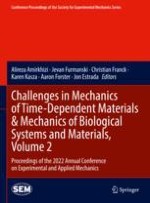Challenges in Mechanics of Time-Dependent Materials & Mechanics of Biological Systems and Materials, Volume 2 of the Proceedings of the 2022 SEM Annual Conference & Exposition on Experimental and Applied Mechanics, the second volume of six from the Conference, brings together contributions to this important area of research and engineering. The collection presents early findings and case studies on fundamental and applied aspects of Experimental Mechanics, including papers in the following general technical research areas:
Characterization Across Length Scales
Extreme Conditions & Environmental Effects
Damage, Fatigue and Fracture
Structure, Function and Performance
Rate Effects in Elastomers
Viscoelasticity & Viscoplasticity
Research in Progress
Cellular Biomechanics and Mechanobiology
Biofilms and Microbe Mechanics
Traumatic Brain Injury
Cardiac and Vascular Biomechanics
Orthopedic and Disease Biomechanics
Time Dependence of Biomaterials
Experimental Techniques in Biological and Biomimetic Systems
